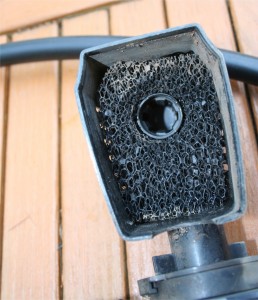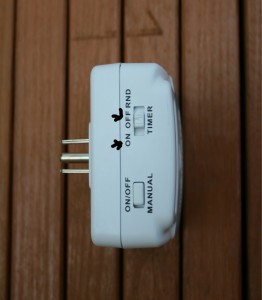Drip system maintenance is key to running an efficient hydroponic drip system. Below are 5 problems to watch for in your drip system. Avoid these problems and you’ll be keeping your plants from automation gone wrong!

1.Drip Emitters – Clogged drip emitters are most likely the number one problem in drip systems. The best way to fix them is cut them off and try a fresh one.
2.Timer On/Off Switch – Have you ever turned the switch on your timer off so your drip system wouldn’t run during a reservoir change? Always double check to make sure that switch is back to ON when you are done.
3. Timer Malfunction – Timers can shut off for various reasons: water damage, battery or power failure, clock malfunction.
4. Reservoir Levels – Reservoir changes are necessary for productive hydroponic gardens. Evaporation and usage will drain your reservoir. When reservoir water evaporates, the nutrients and salts remain in the water. The extra salts create a higher ppm nutrient solution. Add plain or low ppm nutrient solution to get the levels back to where you want them.
5. Avoid Over Watering – Don’t run your drip system intervals for too long. Start with small intervals and increase or decrease frequency depending on your plant’s performance. It may take them a few days to react to changes so be patient.

Did you know you can buy and read customer reviews for Drip Emitters on Amazon? Check it out here.

Good article. Here are a couple things I do to my hydroponic drip systems.
I’ve used a product called “SM-90” and it seems to help with drip systems. It has many uses and one being it helps with buildup that might happen in the drippers.
http://www.nutrilifeproducts.com/products/supplements/inorganic/sm90/instructions/
This can be added with every reservoir change.
Description:
* Improves spray coverage in soil and on plants.
* Lengthens contact and control of sprays improves the lateral movement of moisture in soils.
* Increases the speed of moisture penetration in soils and growing medias.
* Reduces surface tension of spray nozzles and irrigation systems helping to maintain cleaner lines and drippers.
Also, inline filters work as a good “plan B” to the water pump filter. This will help eliminate the chances of any materials moving into the drip lines, in case the pump filter doesnt remove everything.
http://www.urbansunshine.com/shop/index.php?main_page=product_info&cPath=194&products_id=17393
@Outdoor Hydroponics – Thanks for sparking the conversation!
I’ve never used SM-90 – thanks for sharing!
I actually plan to give inline pump filters their own post in the future! In the hydroponics store the other day I noticed the inline Y filters. They have an interesting design but I’ve heard they really work to reduce drip line clogs.
My brother and I had been just discussing this particular very topic, he’s always looking to prove me completely wrong. Your current view on this is fantastic and just how I feel. I just now emailed my brother this page to demonstrate him your view. Immediately after looking over your blog site I added and will be coming back to read your posts!
Regarding inline filters: The best kind are the large, canister disc filters by Arkal. You choose the micron size and they do the rest. Larger filters collect more particles and need cleaning less often. When the filter clogs, the system pressure drops and emitter performance declines. If you put a pressure gauge before and after the filter, you will see the pressure drop and it is an indication of when the filter needs changing. Experience will tell you what pressure drop is associated with what level of filter clogging.
The closer the filter is to the emitter, the better chance you have of picking up the most debris. Debris collects in the lines and dislodges randomly and with movement of the lines. So catch it all, put the filter downstream.
For trickle or drip systems, run a fresh water cycle after the feed cycle to flush the lines and emitters. Some really nasty, smelly stuff accumulates in the lines if you leave it there, unflushed. The fresh water cycle only needs to run long enough for the fresh water to go through the system and out to the emitters.
Regarding Y filters: They are OK, but not great. Most of them use mesh filter elements which have a small surface area, they clog easily and they are a bear to clean. Disc filters are a huge improvement; large surface area, easy to clean and they don’t clog as readily.